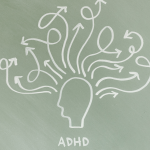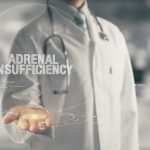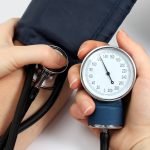Naturopathic Cardiology: Natural Intervention to Prevent & Reverse Heart Disease
Decker Weiss, NMD, FASA
Tolle Totum
Dream number #1 in my medical career had come true: It was September 5, 2014 in Cleveland, OH, and I was lecturing at Cleveland HeartLab’s annual symposium on the subject of cutting-edge diagnostics and how to prevent and recover from cardiovascular disease (CVD).1
CVD and Depression
One of the topics discussed at this symposium was the link between CVD and depression. I presented conclusions from a preliminary study performed in partnership with Pharmasan Labs and Cleveland Heart Lab (a small miracle in itself), demonstrating how a clinical diagnosis can progress to a biomarker analysis (Neurotransmitters/neuro-inflammation/methylation/MPO/hs-CRP/OxLDL) and then on to treatment and recovery, not just from the depression, but from both the depression and the heart disease.
I received a huge ovation and had many questions from the audience – both signs that the lecture went well. However, just before wrapping up, I posed a single question to the cardiologist-dominated crowd: How many cardiologists here are willing to screen patients for depression? How many cardiologists here are willing to ask their patients, “Are you happy?” Fewer than 10 of the 200+ attendees raised their hands.Later, at the buffet lunch, I received some very direct feedback as to why cardiologists would not screen for depression: “It’s not our job!”
If we fast forward to August 3, 2017, depression after a diagnosis of coronary artery disease is now considered the strongest predictor of death, or the leading risk factor.2 If the group I spoke with was willing to expand their “job,” I wonder how many lives could be saved?
It was that night that I decided to separate conventional cardiologists from those who try to reverse and prevent coronary artery disease and heart failure. I decided that if we slowly start transitioning patients out of clinical cardiologists’ offices (versus the interventionists who do stents, etc) and into holistic or naturopathic primary care (whose job would normally include asking if the patient is happy), the world could truly start to prevent and reverse the #1 killer of women and men. So, this article is designed for you, the holistic primary-care doc, my hero.
Seven Steps to Preventing CVD
After 20 years of practice, here are my key recommendations for naturopathic treatment and prevention of cardiovascular disease.
1) Perform a proper intake
I have already spoken about depression, but let’s look at things from a human perspective. A proper intake should be an inflammation Q & A, from skin to joint pain, from headaches to gas and bloating. An inflammation “hunter” can eventually get a lot of people well and prevent and reverse a lot of heart disease. Treat accordingly on an individual basis using natural agents, while avoiding the use of non-steroidal anti-inflammatory drugs (NSAIDs) and acid-blockers. NSAIDs such as ibuprofen have been associated with heart attacks3 (even within the first week of taking them) and heart failure.4 Proton pump inhibitors (PPIs) such as omeprazole were reviewed in a data-mining exercise in which Stanford University examined over 16 million documents containing data on 2.9 million patients.5 The review demonstrated that the risk of heart attacks is slightly higher, and the risk of cardiovascular mortality as much as 2-fold higher, in those taking PPIs, as compared to patients not taking the medication.5
In addition, consider conditions such as insomnia, fatigue, and depression not only as cardiovascular risks but as reversible inflammatory conditions. The key here is individualizing treatment to match a patient’s individualized symptom picture. I routinely tell patients that everyone who has a heart attack has had warnings, but we are taught to ignore them or trivialize them. In a naturopathic paradigm, gas and bloating is a warning, as are insomnia and depression, joint pain, low hormones, constipation, and hypertension. Sure, chest pain is a warning… But, really, isn’t it a little late by that point?
2) Fix the gastrointestinal tract
Repair the GI tract from mouth to anus, including restoring the proper pH, balancing flora, and, if needed, correcting constipation and leaky gut. While addressing pH in the stomach and gut may be based more on a naturopathic model, there is little doubt that imbalanced flora and constipation contribute to cardiovascular risk. It is accepted that obesity is a risk factor for atherosclerosis,6 but how about also recognizing that obese patients don’t just have additional weight but often also gut dysbiosis?7
In terms of specific links between gut flora and cardiovascular disease, Lactobacillus plantarum species has been shown to have a direct protective effect on atherosclerosis in cell-line studies,8 and even in smokers.9 A large study that followed 45 000 Japanese adults over 13 years revealed a higher risk of dying from cardiovascular disease, especially stroke, among participants with infrequent bowel movements, ie, constipation.10 For the record, I am a big advocate of an organic foods-based, small intestinal bacterial overgrowth (SIBO)-type diet, along with the correct probiotics. However, I would like to add a caveat that if the restoration of an acidic stomach and alkaline intestines and system are not also part of the process, the offending flora will probably just return.
3) Assume endothelial dysfunction in patients over 40 with current heart disease or heart failure, hypertension, or a family history of CVD
Endothelial dysfunction (a pathological state of the intima, or lining of the blood vessels) is involved in lesion formation and increased cell permeability (allowing oxidized cholesterol to migrate into the space between the intima and media layers), thereby contributing to diminished production/availability of nitric oxide and atherosclerosis.11 Endothelial dysfunction plays a key role in exercise-related myocardial ischemia and leads to a poor cardiovascular prognosis, even when other risk factors do not come into play.12
While normal endothelial function can be restored,12 conventional models do not offer many specifics on how to do this. Botanicals such as Crataegus spp,13 and Phyllanthus emblica,14 and oral orthomolecular agents such as alpha-lipoic acid,15 coenzyme Q10,16 and magnesium17 are just a few of the natural agents which have shown protective and corrective effects on endothelium.
4) Run appropriate labs
Proper cardiovascular laboratory assessment includes a lipid panel that not only examines lipid vulnerability data such as LDL-C, sdLDL (small, dense LDL), ApoB, ApoA-1, ApoB/ApoA-1 ratio, but also inflammatory markers such as MPO (myeloperoxidase), hs-CRP (high-sensitivity C-reactive protein), autoimmune markers such as dsDNA (double-stranded DNA), ANA (antinuclear antibody), and thyroid antibodies, a full glucose panel along with ferritin, and realized disease markers (as opposed to potential vulnerability) such as homocysteine, oxidized LDL, sex hormones, and thyroid hormones. If a patient has insomnia, fatigue, and/or depression, or is a symptomatic menopausal female, I would also recommend running a comprehensive urine neurotransmitter profile. This is because low serotonin and other neurotransmitters can be directly linked to endothelial dysfunction.18
5) Manage fluids and vital signs including blood sugar
Let’s not be close-minded here; medications are sometimes needed, at least until the underlying causes are corrected. Mediations such as diuretics, beta-blockers, and ACE inhibitors can save lives and be a wonderful service to patients. I would like to think that in an ideal world, medications should only be a bridge until the body’s vital signs correct themselves through your natural protocols. Endothelial repair (eg, reversing nutrient depletion), correcting neurotransmitter dysfunction and hormones, healing gut and systemic inflammation per your patient intake will go a long way toward reducing or eliminating the need for medications. In my opinion, the holistic practitioner should consider a liver, lymph, and colon detox as well.
6) Keep moving
The studies linking exercise to heart health are too numerous to list here; however, exercise is also linked to improvements in numerous cardiovascular risk factors such as obesity,19 depression,20 inflammation,21 diabetes,22 and more. I believe it is the duty of practitioners to try to inspire the patient to exercise, rather than just give them a form or suggest they go for a walk. I really enjoy enrolling my over-50-year-old patients into martial arts.
7) Cleanse the liver, lymph, and colon
Frankly, there are not many research sites to list here (thank heavens), but here is the basic principle: Lymph is linked to immune tissue, which is part of the inflammatory cycle; therefore, from a naturopathic perspective, clearing it makes for good physiology. (Massage, botanicals, and infrared sauna are great tools.) Oxidized cholesterol – a strong predictor of not only coronary artery disease but heart attacks as well – is formed from free radical attacks on cholesterol that occur from not only poor food choices,23 but also from chylomicron interaction in the gut and lymph.24 Consequently, I tend to conduct lymph, colon, and liver detoxes on patients in order to clear this oxidized cholesterol. This can nicely precede the GI work listed in step #2.
Conclusion
Joint pain: my job; obesity: my job; fatigue and insomnia: again my job. Depression (if not suicidal) may again be my job. Why? Because they’re all connected. When I was in training, one of my colleagues, Dr Harvey Hecht, made his hands into the shape of a box, put them on my chest, and said, “Decker, this is where we work.” I shook my head and said, “Sorry, Dr Hecht. I will never practice that way.”
My challenge here wasn’t the model but rather the fact that Dr Hecht was one of the best people I knew – a genuinely good person and great “interventional/conventional” cardiologist. Looking back on this time, I realized that his being a great interventional/conventional cardiologist was also the problem. This came with a narrow focus and, even for my friend, some bias. It’s simply time to replace the “Dr Hechts” with you, the holistic/naturopathic practitioner, in terms of recovery and prevention of heart disease and heart failure. Time to recuse cardiology from itself.
Refs:
- Cleveland Heart Lab. 2014 5th Annual Symposium. Available at: http://www.clevelandheartlab.com/company/news/symposium/. Accessed August 4, 2017.
- May HT, Horne BD, Knight S, et al. The association of depression at any time to the risk of death following coronary artery disease diagnosis. Eur Heart J. 26 July 2017. [Not yet published]. Abstract available at: http://tinyurl.com/ya69r3go. Accessed August 1, 2017.
- Bally M, Dendukuri N, Rich B, et al. Risk of acute myocardial infarction with NSAIDs in real world use: bayesian meta-analysis of individual patient data. BMJ.2017;357:
- Arfè A, Scotti L, Varas-Lorenzo C, et al. Non-steroidal anti-inflammatory drugs and risk of heart failure in four European countries: nested case-control study. BMJ.2016;354:i4857.
- Shah NH, LePendu P, Bauer-Mehren A, et al. Proton pump inhibitor usage and the risk of myocardial infarction in the general population. PLoS One. 2015;10(6):e0124653.
- Caesar R, Fåk F, Bäckhed F. Effects of gut microbiota on obesity and atherosclerosis via modulation of inflammation and lipid metabolism. J Intern Med.2010;268(4):320-328.
- Anhê FF,Varin TV, Le Barz M, et al. Gut Microbiota Dysbiosis in Obesity-Linked Metabolic Diseases and Prebiotic Potential of Polyphenol-Rich Extracts. Curr Obes Rep. 2015;4(4):389-400.
- Kim JY, Kim H, Jung BJ, et al. Lipoteichoic acid isolated from Lactobacillus plantarum suppresses LPS-mediated atherosclerotic plaque inflammation. Mol Cells. 2013;35(2):115-124.
- Naruszewicz M, Johansson ML,Zapolska-Downar D, Bukowska H. Effect of Lactobacillus plantarum 299v on cardiovascular disease risk factors in smokers. Am J Clin Nutr. 2002;76(6):1249-1255.
- Honkura K, Tomata Y, Sugiyama K, et al. Defecation frequency and cardiovascular disease mortality in Japan: The Ohsaki cohort study. Atherosclerosis. 2016;246:251-256.
- Hadi HA, Carr CS, Al Suwaidi J. Endothelial dysfunction: cardiovascular risk factors, therapy, and outcome. Vasc Health Risk Manag. 2005;1(3):183-198.
- Ganz P, Hsue PY. Endothelial dysfunction in coronary heart disease is more than a systemic process. Eur Heart J. 2013;34(27):2025-2027.
- Peters W, Drüppel V, Kusche-Vihrog K, et al. Nanomechanics and sodium permeability of endothelial surface layer modulated by hawthorn extract WS 1442. PLoS One. 2012;7(1):e29972.
- Usharani P, Fatima N, Muralidhar N. Effects ofPhyllanthus emblica extract on endothelial dysfunction and biomarkers oxidative stress in patients with type 2 diabetes mellitus: a randomized, double-blind, controlled study. Diabetes Metab Syndr Obes. 2013;6:275-284.
- Heinisch BB,Francesconi M, Mittermayer F, et al. Alpha-lipoic acid improves vascular endothelial function in patients with type 2 diabetes: a placebo-controlled randomized trial. Eur J Clin Invest. 2010;40(2):148-154.
- Gao L,Mao Q, Cao J, et al. Effects of coenzyme Q10 on vascular endothelial function in humans: a meta-analysis of randomized controlled trials. Atherosclerosis. 2012;221(2):311-316.
- Shechter M,Sharir M, Labrador MJ, et al Oral magnesium therapy improves endothelial function in patients with coronary artery disease. Circulation. 2000;102(19):2353-2358.
- Lüscher TF,Richard V, Tschudi M, Yang Z. Serotonin and the endothelium. Clin Physiol Biochem. 1990;8 Suppl 3:108-119.
- Eckel RH. Obesity and heart disease: a statement for healthcare professionals from the Nutrition Committee, American Heart Association. Circulation.1997;96(9):3248-3250.
- Mead GE, Morley W, Campbell P, et al. Exercise for depression. Cochrane Database Syst Rev. 2009 Jul 8;(3):CD0044366.
- Ford ES. Does exercise reduce inflammation? Physical activity and C-reactive protein among U.S. adults. Epidemiology. 2002;13(5):561-568.
- Parlikar U. Tight blood sugar control in type 2 diabetes linked to fewer heart attacks and strokes. June 4, 2015. Harvard Health Publications. Available at: https://www.health.harvard.edu/blog/tight-blood-sugar-control-in-type-2-diabetes-linked-to-fewer-heart-attacks-and-strokes-201506048059. Accessed August 4, 2017.
- Moll J. What Is Oxidized LDL Cholesterol? Updated February 20, 2017. Available at: https://www.verywell.com/what-is-oxidized-ldl-698079. Accessed August 4, 2017.
- Staprans I,Pan XM, Rapp JH, Feingold KR. The role of dietary oxidized cholesterol and oxidized fatty acids in the development of atherosclerosis. Mol Nutr Food Res. 2005;49(11):1075-1082.
Image Copyright: <a href=’https://www.123rf.com/profile_neydt’>neydt / 123RF Stock Photo</a>
 Decker Weiss, NMD, FASA, became the first naturopathic cardiologist, completing cardiovascular hospital-based training in the Columbia Hospital system, the AZ Heart Institute, and the AZ Heart Hospital. Dr Weiss kept privileges at the AZ Heart Hospital while opening the Scottsdale Heart Institute. There he helped thousands of patients prevent surgery and reverse heart disease naturally. In 2012 the Intl Assn of Health Care Practitioners and the Intl Assn of Cardiologists named Dr Weiss, a “Leading Physician in the World.” As he joined Artis Intl, he shifted focus to inflammation, genetics, and the science of intractable conflict, lecturing, practicing medicine, and performing research in various war zones around the world. Dr Weiss is also a key opinion leader for Pharmasan Labs and NeuroScience.
Decker Weiss, NMD, FASA, became the first naturopathic cardiologist, completing cardiovascular hospital-based training in the Columbia Hospital system, the AZ Heart Institute, and the AZ Heart Hospital. Dr Weiss kept privileges at the AZ Heart Hospital while opening the Scottsdale Heart Institute. There he helped thousands of patients prevent surgery and reverse heart disease naturally. In 2012 the Intl Assn of Health Care Practitioners and the Intl Assn of Cardiologists named Dr Weiss, a “Leading Physician in the World.” As he joined Artis Intl, he shifted focus to inflammation, genetics, and the science of intractable conflict, lecturing, practicing medicine, and performing research in various war zones around the world. Dr Weiss is also a key opinion leader for Pharmasan Labs and NeuroScience.










